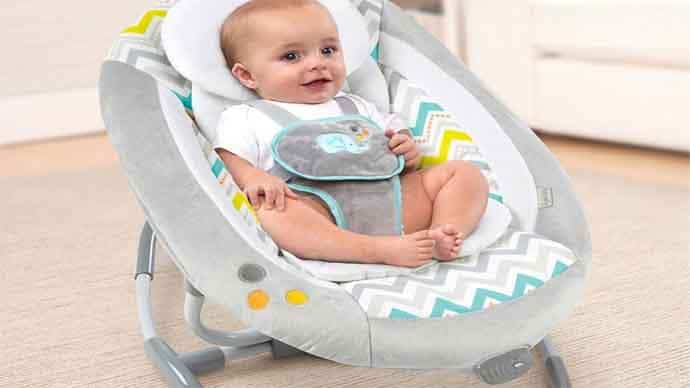As a parent or guardian, the safety and well-being of your infant is a top priority. When it comes to traveling with your little one in a car, selecting the right car seat is crucial in ensuring their safety. In this section, we will explore the differences between infant car seats and convertible car seats, and provide guidance on choosing the best car seat for your infant.
Car seat safety is not something that should be taken lightly. It is essential to install and use the car seat correctly, as improper installation can result in serious injury or even death. We will also discuss the importance of car seat safety and proper installation, along with the laws and regulations surrounding them.

Key Takeaways:
- Choosing the right car seat is crucial for your infant’s safety during transit.
- Both infant car seats and convertible car seats have their advantages and disadvantages.
- Proper installation of the car seat is essential for maximum safety.
- It is important to follow car seat safety regulations and laws in your area.
- Consider safety, comfort, and convenience when selecting a car seat for your infant.
Understanding Infant Car Seats
As a parent, your top priority while traveling with your infant is their safety. Infant car seats are specially designed to cater to the needs of newborns and young infants, ensuring their safety during transit.
When choosing an infant car seat, it’s essential to consider your child’s weight, height, and age to ensure the seat is suitable for them. The American Academy of Pediatrics recommends that infants should remain in a rear-facing car seat until at least two years of age, or until they exceed the weight and height limits of the car seat.
Car Seat Guidelines and Recommendations
When it comes to infant car seats, following the guidelines and recommendations is crucial to ensure your child’s safety. Here are some essential guidelines and recommendations you should know:
- Never buy a used car seat. A used car seat can compromise your child’s safety. Always buy a brand new car seat, or if you must buy a used one, ensure you know its history and that it has not been involved in any accidents.
- Don’t place the car seat in the front seat of the car. The safest place for an infant car seat is in the back seat of the car, in the middle if possible.
- Ensure a snug fit. The car seat should fit snugly against your child’s back. You should not be able to fit more than one finger between the car seat and your child’s chest.
Additionally, ensure that the car seat you select meets the Federal Motor Vehicle Safety Standard 213. This standard ensures that car seats meet the minimum safety requirements to protect your child in the event of an accident.
Safety and Comfort Features
Infant car seats come with a range of safety and comfort features to ensure your child’s well-being during transit. Some common features include:
| Features | Description |
|---|---|
| 5-point harness | This harness system secures your child in the car seat with two shoulder straps, two waist straps, and a crotch strap. |
| Side-impact protection | This feature provides additional protection to your child’s head and shoulders in the event of a side-impact accident. |
| Adjustable base | The adjustable base allows you to adjust the recline angle of the car seat, providing additional comfort for your child. |
When choosing an infant car seat, consider the features that align with your needs and priorities. Safety is paramount, but comfort features can also make a significant difference in your child’s comfort during transit.
Exploring Convertible Car Seats
Convertible car seats offer an excellent alternative to infant car seats as they can grow with your child, accommodating their changing needs. These car seats can be used both as rear-facing seats for infants and as forward-facing seats for toddlers. They usually come with adjustable features such as headrests, harnesses, and recline positions, ensuring optimal comfort and safety for your child.
Convertible Car Seat Guidelines and Recommendations
When choosing a convertible car seat, there are some guidelines and recommendations to keep in mind to ensure your child’s safety:
- Always refer to the manufacturer’s instructions for installation and proper use.
- Make sure the car seat fits your child’s size and weight, and adjust the straps and headrest accordingly.
- Ensure the car seat is installed securely and tightly in your vehicle.
- Follow the height and weight limits for rear-facing and forward-facing use.
It’s worth noting that convertible car seats do have some disadvantages compared to infant car seats. For example, they are typically bulkier and heavier, making them less portable. Additionally, if you have more than one vehicle, transferring the car seat from one car to another can be more challenging.
Despite these drawbacks, convertible car seats are still an excellent choice for parents who want to invest in a car seat that will adapt to their child’s growth and save them money in the long run.
Safety Considerations for Infant Car Seats and Convertible Car Seats
As a parent, your top priority is keeping your child safe, especially while in a moving vehicle. That’s why it’s essential to understand the safety considerations for both infant car seats and convertible car seats.
The Importance of Rear-Facing Car Seats
When it comes to infant car seats and convertible car seats, the American Academy of Pediatrics (AAP) recommends that infants and toddlers stay in a rear-facing car seat until they are at least two years old or until they reach the highest weight or height allowed by the car seat’s manufacturer.
Rear-facing car seats are designed to cradle your infant’s head, neck, and spine in the event of a crash, which is especially important for a baby’s developing body. In fact, according to the AAP, using a rear-facing car seat reduces the risk of serious injury or death in a crash by more than 70%.
Car Seat Safety Regulations and Laws
To ensure the utmost safety for your child, it’s important to follow car seat safety regulations and laws in your state or country. In the United States, all states have laws regarding child car seat use, but the specifics vary by state.
For example, some states require the use of a rear-facing car seat until a child is two years old, while others have laws that require rear-facing car seats until a specific weight or height is reached. Make sure to research your state’s car seat laws and follow them closely.
It’s also important to make sure that your car seat meets all safety standards set by the National Highway Traffic Safety Administration (NHTSA). Look for a label on the car seat that confirms compliance with Federal Motor Vehicle Safety Standard (FMVSS) 213.

Always follow the manufacturer’s instructions for proper installation and use of your infant car seat or convertible car seat. Misusing a car seat can result in serious injury or death in the event of a crash.
Ensuring the safety of your infant or toddler while in a car is crucial, and understanding the safety considerations for infant car seats and convertible car seats is a key part of that. Remember to always use a rear-facing car seat until your child is at least two years old or meets the height and weight requirements set by the car seat’s manufacturer. Follow your state’s laws and regulations and make sure your car seat meets all safety standards set by the NHTSA. With these precautions in mind, you can rest assured that your child is safe and secure while in transit.
Convenience and Installation
Once you’ve chosen the right car seat for your child, the next step is ensuring it’s installed correctly. Both infant car seats and convertible car seats must be installed properly to provide optimal protection for your little one.
When it comes to installation, infant car seats are generally easier to install than convertible car seats. This is because they are usually smaller, lighter, and designed to be rear-facing only, which simplifies the installation process.
On the other hand, convertible car seats offer more versatility, as they can be adjusted to fit your child as they grow. However, this added flexibility can make installation more complex, especially if you need to adjust the seat for different ages and weights.
No matter which type of car seat you choose, it’s essential to read the instructions carefully and follow all the guidelines provided by the manufacturer. Make sure to use the correct installation method for your vehicle, such as using the LATCH system or seat belt installation.
If you’re unsure whether your car seat is installed correctly, you can get it checked by a certified child passenger safety technician. They can help you ensure that your car seat is installed correctly and answer any questions you may have about proper usage.
Installation Tips
Here are some key tips to keep in mind when installing your infant car seat or convertible car seat:
- Read the installation instructions carefully.
- Make sure the seat is securely and tightly installed.
- Ensure the seat is at the correct angle for your child’s age and weight.
- Position the harness straps correctly, ensuring they are snug but not too tight.
- Use the appropriate installation method for your vehicle.
- Regularly check the fit and tightness of the car seat.
By following these guidelines and installation tips, you can ensure that your child’s car seat is installed safely and securely, giving you peace of mind while traveling.

Conclusion
After weighing all the factors discussed in the previous sections, you are now equipped to make an informed decision on whether to choose an infant car seat or a convertible car seat for your little one. Remember that safety should always come first when it comes to car seats, and you should always follow the guidelines and regulations in your area.
Infant car seats are a great option for newborns and younger infants, offering a snug and secure fit that is specifically designed for their smaller size and delicate bodies. Convertible car seats, on the other hand, offer more versatility and can be used for a longer period of time as your child grows.
Final Thoughts
No matter which type of car seat you choose, be sure to install it correctly and check it regularly for any signs of wear or damage. Always keep your child in a rear-facing car seat until they reach the maximum weight or height limit recommended by the manufacturer or your local safety regulations.
Finally, always keep in mind that your child’s safety is paramount. Choosing the right car seat and using it properly can make all the difference in keeping your little one safe and comfortable during their travels. Good luck, and safe travels!


![Can I Eat Ice Cream While Breastfeeding?[Answered]](https://www.newmomstuff.com/wp-content/uploads/2021/07/mom-eating-ice-cream.jpg)

